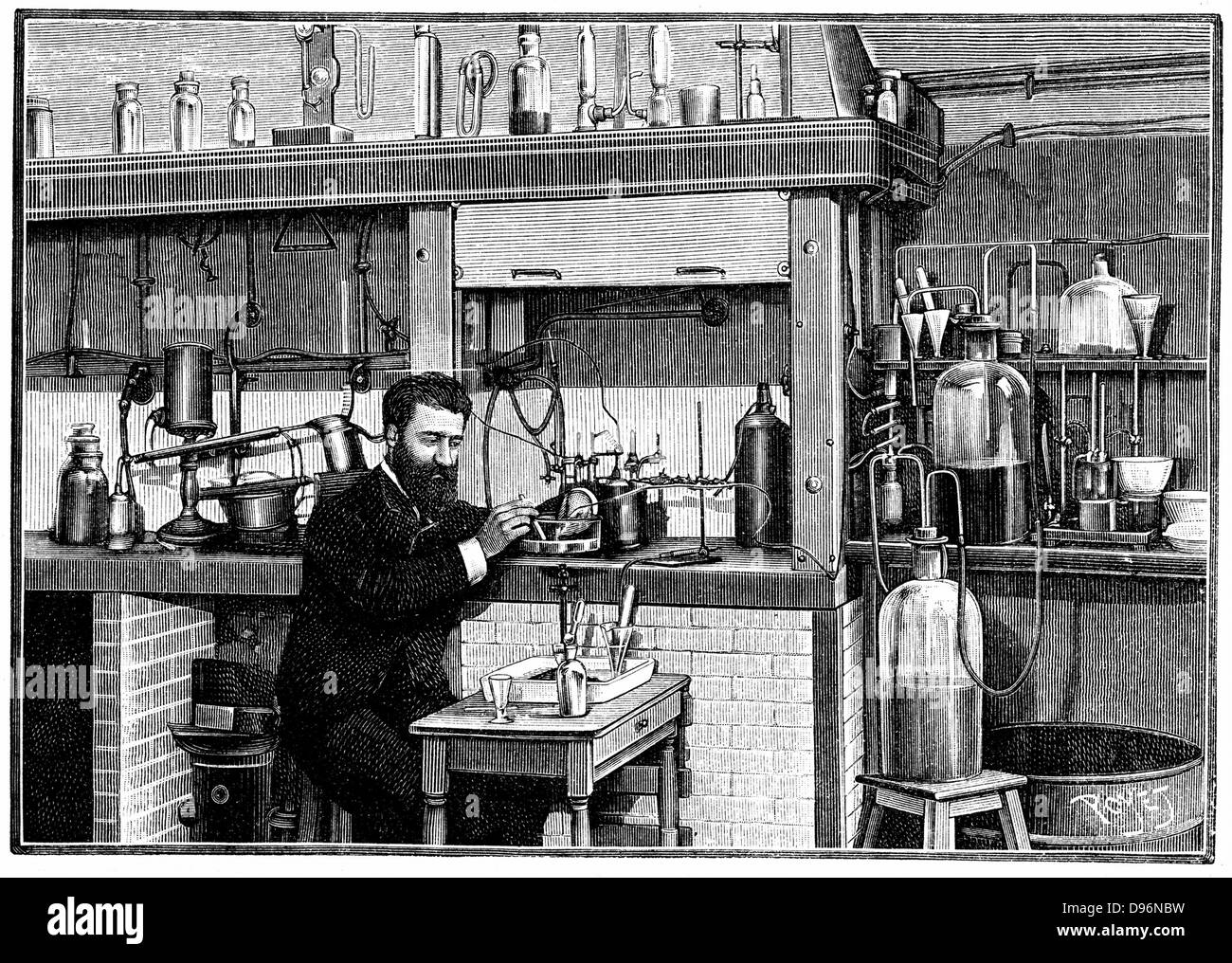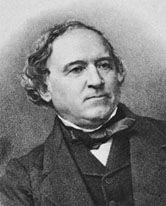Henri Moissan: A Pioneer of Chemistry and the Quest for Synthetic Diamonds
Introduction
Henri Moissan, a name that resonates with profound influence in the realm of chemistry, particularly known for his ground-breaking work in the isolation of fluorine and the invention of the electric arc furnace. Born in the bustling city of Paris in 1852, Moissan's contributions laid the groundwork for advancements in both inorganic chemistry and industrial applications. A Nobel Laureate, Moissan's work is a testament to the spirit of ingenuity and perseverance in scientific inquiry. This article delves into Moissan's remarkable life, his scientific pursuits, and the lasting impact of his discoveries.
Early Life and Education
Henri Moissan's journey into the scientific world began modestly. Born in 1852, he was the son of a customs officer, and his early education took place in the public schools of Paris. Despite the limited resources of his family, Moissan displayed a keen interest in the natural sciences. Encouraged by this passion, he pursued higher education at the Museum of Natural History and later the Sorbonne in Paris.
Moissan's early academic career was marked by challenges common to many in the late 19th century. The availability of advanced scientific equipment and resources was sparse, requiring Moissan to harness determination and resourcefulness. His perseverance paid off when he completed his studies in pharmacy in 1879. It was during these formative years that Moissan developed a profound interest in chemistry, particularly in inorganic compounds.
The Isolation of Fluorine
One of Moissan's most celebrated achievements was the isolation of the element fluorine. Prior to his work, attempts to isolate fluorine had been fraught with danger due to the element's highly reactive nature. Fluorine had been described by Sir Humphry Davy as a "substance with which the chemist has been long acquainted by its properties and yet which he has never seen."
Moissan's methodical approach to chemistry was instrumental in overcoming these challenges. His breakthrough came in 1886, when he successfully isolated fluorine by carefully electrolyzing a solution of potassium bifluoride in anhydrous hydrogen fluoride. This delicate process, undertaken at low temperatures, managed to yield pure fluorine gas, affirming Moissan's reputation as a meticulous and methodical chemist.
This accomplishment did not go unnoticed. The isolation of fluorine was recognized as a milestone in chemical science, with Moissan receiving numerous accolades from the international scientific community. His work on fluorine also underscored the potentiality of systematic experimental approaches in overcoming long-standing scientific barriers.
The Electric Arc Furnace
Inspired by his earlier achievements, Moissan continued to push the boundaries of conventional chemistry. In 1892, he devised a revolutionary piece of equipment known now as the Moissan Electric Arc Furnace. This invention allowed for temperatures far exceeding those achievable by traditional furnaces of the time. By passing an electric current between two carbon electrodes, Moissan was able to reach temperatures of up to 3500°C, effectively enabling the study and manipulation of materials and reactions previously considered unfeasible.
The electric arc furnace quickly became an indispensable tool in metallurgical processes and industrial chemistry. Moissan's innovation fostered advancements in the synthesis of a range of high-temperature materials, including an increased understanding of the behavior of metal carbides. Furthermore, this breakthrough played a pivotal role in subsequent developments related to the manufacturing of steel and other alloys, which became vital to industrial growth during the 20th century.
Conclusion
Henri Moissan's scientific vigor and brilliance left an indelible mark on the landscape of chemistry. His groundbreaking work on fluorine and the electric arc furnace not only expanded the boundaries of scientific understanding but also laid the practical groundwork for numerous technological advancements. Through dedication and an unwavering commitment to experimental inquiry, Moissan exemplified the power of focused scientific endeavor. As we delve further into his legacy, we discover more of his profound influence on the world of chemistry and beyond.
The Quest for Synthetic Diamonds
One of Henri Moissan's most ambitious pursuits was his quest to create synthetic diamonds. Fascinated by the allure and properties of these precious gems, Moissan was driven by the belief that their formation could be replicated in the laboratory, a feat that had eluded scientists for centuries.
Leveraging the capabilities of his electric arc furnace, Moissan embarked on a series of experiments aimed at replicating the high-temperature and high-pressure conditions believed to prevail deep within the Earth, where natural diamonds are formed. His approach involved placing charcoal and iron in the crucible of his furnace, where he subjected them to intense heat. The rapid cooling of the mixture, he hypothesized, would mimic the conditions necessary for carbon crystallization.
In 1893, Moissan announced the successful synthesis of microscopic diamonds, drawing international attention to his work. Despite initial skepticism from some corners of the scientific community, his alleged success was a significant milestone. While the diamonds Moissan created were extremely small and not suitable for commercial applications, his work set the stage for future research into synthetic diamond production.
Recognition and Honors
Henri Moissan's contributions did not go unrecognized during his lifetime. In 1906, he was awarded the Nobel Prize in Chemistry for his work on the isolation of fluorine and the development of the electric arc furnace. This prestigious award cemented his status as one of the preeminent chemists of his era.
Moissan's Nobel Prize acceptance speech highlighted his reverence for the pursuit of knowledge and the importance of scientific collaboration. He praised his colleagues and expressed gratitude for the opportunities to contribute to a greater understanding of chemical processes and phenomena. The award reflected not only his personal achievements but also the broader impact of his work on the scientific community and industrial practices.
Beyond the Nobel Prize, Moissan received numerous other accolades, reflecting his influence across multiple scientific disciplines. He was admitted into the French Académie des Sciences and received honorary doctorates from various institutions. His legacy was further honored by the naming of the mineral moissanite after him, an acknowledgment of his work with silicon carbide.
Impact on Modern Science and Industry
Moissan's pioneering work has had a lasting impact on both scientific research and industrial applications. The methods and theories he developed have been foundational in exploring and understanding chemical reactions at extreme temperatures.
In the modern era, synthetic diamonds have become a reality, driven by advancements in technology and fueled by Moissan's early experiments. Today, lab-grown diamonds have applications extending far beyond jewelry. They play crucial roles in electronics, cutting tools, and a variety of industrial applications due to their unmatched hardness and thermal conductivity.
Furthermore, Moissan's development of the electric arc furnace has underpinned significant advancements in materials science. The process he mastered is instrumental to industries such as steelmaking and the production of high-purity alloys. It is not an exaggeration to state that Moissan's contributions helped catalyze the industrial progress that characterized the 20th century.
Personal Life and Legacy
Despite his professional accolades, Moissan was known for his humble nature and dedication to education. He spent his later years as a professor at the Collège de France, where he inspired and mentored a new generation of chemists. His approach to teaching was characterized by encouragement and an enthusiasm for discovery, emphasizing the importance of curiosity as a catalyst for scientific progress.
Henri Moissan passed away in 1907, just a year after receiving the Nobel Prize. His death marked the end of a chapter of significant scientific achievement, but his legacy has continued to influence generations of chemists and scientists. The techniques and principles he pioneered are still taught and employed, reflecting the timeless nature of his contributions to chemistry.
As a figure in science, Moissan exemplified the essence of discovery. His work demonstrated the power of ingenuity and perseverance in unraveling the mysteries of chemistry and in achieving what was once considered impossible. Moissan's life reminds us of the perpetual human pursuit of knowledge, driving forward the boundaries of what is known and understood. As we continue to explore and advance, his spirit of inquiry remains a guiding light for future innovators in the fields of science and technology.
Influence on Future Scientific Endeavors
Henri Moissan’s significant contributions to chemistry not only influenced his contemporaries but also inspired future generations of scientists. His work on isolating fluorine demonstrated the value of patience and meticulous experimentation, traits that are crucial within scientific disciplines where safety and precision are essential. Moissan's pioneering spirit continues to serve as a model for researchers engaged in the challenge of isolating and understanding other reactive elements.
The theoretical frameworks he developed for high-temperature chemistry have been expanded upon and utilized in a wide range of scientific investigations. His methods for generating extreme temperatures laid the groundwork for the study of thermodynamics in novel states of matter and catalyzed growth in fields such as material science, geochemistry, and even astrophysics, where high temperatures play a crucial role.
Furthermore, the quest for synthetic diamonds, although rudimentary in Moissan’s time, has blossomed into a robust industry that intersects chemistry and commercial enterprise. Today, synthetic diamonds are not only crafted for aesthetic purposes but are also integral to technological advancements, including quantum computing and nanotechnology. The legacy of Moissan’s early experiments lies in their present-day practicality and their role in supporting sustainable practices through the production of eco-friendly gemstones.
Educational Impact and Scientific Culture
Moissan’s emphasis on the accessibility of scientific knowledge was a hallmark of his career. He believed that science should transcend social and economic boundaries and foster a culture of inclusiveness and mutual respect. This vision was reflected in his commitment to educational institutions and his work to inspire young scientists.
By creating an atmosphere where inquiry was encouraged, Moissan left a lasting impact on the academic culture within scientific education. The principles of his teaching extended beyond chemistry, influencing pedagogical approaches across various disciplines that stress the importance of critical thinking, perseverance, and creative problem-solving.
His work also underscored the importance of interdisciplinary collaboration within scientific communities. Moissan’s rapport with fellow scientists and his openness to collaborative efforts provided a template for modern scientific research that values teamwork and the sharing of knowledge across fields. These aspects are vital at a time when solving complex global issues requires interdisciplinary and international cooperation.
Commemorations and Modern-Day Relevance
As the world continues to honor Henri Moissan, numerous institutions, awards, and scientific endeavors bear his name. The mineral moissanite, a testament to his groundbreaking synthesis of silicon carbide, continues to be a valuable material in various industrial applications. Moissanites have gained substantial popularity as an alternative to diamonds, highlighting their significance in the jewelry market.
Moreover, the Moissan International Prize in Fluorine Chemistry has been established to celebrate ongoing advancements in the field of fluorine chemistry, serving as a reminder of Moissan’s contributions and encouraging continued innovation within the field. Recipients of this award contribute novel research that reflects the same spirit of exploration and discovery that Moissan exemplified.
Moissan's methodologies and achievements resonate with today's scientific community, where similar challenges—such as discovering sustainable solutions and understanding complex chemical interactions—are ever-present. His life’s work remains a valuable source of inspiration, encouraging scientists to pursue their inquiries with the same rigor and passion.
Conclusion
Reflecting on the life and contributions of Henri Moissan reveals a narrative of perseverance, curiosity, and monumental impact. From his determination in isolating fluorine and creating the electric arc furnace to his venture into the synthetic production of diamonds, Moissan embodied the virtues of scientific exploration. His work not only advanced the understanding and application of chemistry during his time but also laid the foundations for innovations that continue to shape the world.
Henri Moissan’s legacy is evident in the advancements nurtured by his discoveries, in the inspiration he provides to educators and students, and in the collaborative spirit that defines modern scientific practices. The story of Moissan exemplifies the enduring potential of science to discover, innovate, and elucidate the wonders of the natural world, offering timeless lessons that propel the quest for knowledge into the future.








Comments